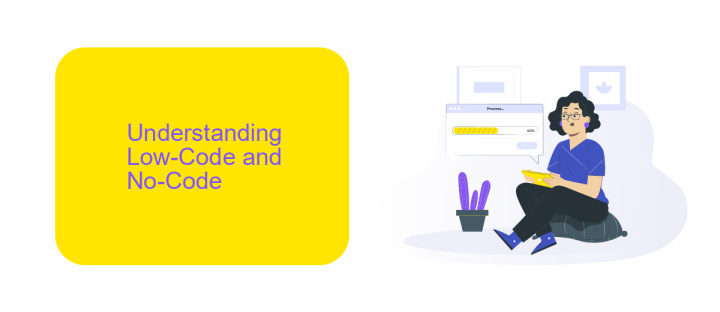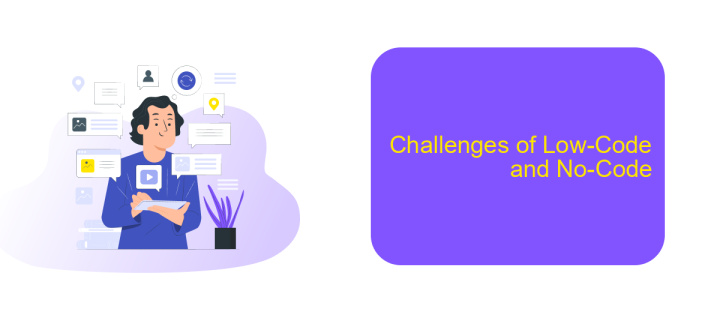Low-Code No-Code Technology
Low-Code No-Code technology is revolutionizing the way businesses develop software by enabling users with minimal programming knowledge to create applications quickly and efficiently. This approach democratizes software development, reduces costs, and accelerates time-to-market, empowering organizations to innovate and adapt in an increasingly competitive landscape. Discover how Low-Code No-Code platforms are transforming the digital world and driving technological advancements.
Introduction
Low-Code No-Code technology has revolutionized the way businesses approach software development. By enabling users to create applications with minimal hand-coding, it democratizes the development process, making it accessible to non-technical users. This shift not only accelerates project timelines but also reduces costs and dependency on specialized IT staff.
- Faster development cycles
- Reduced costs
- Empowerment of non-technical users
- Increased flexibility and scalability
One of the key advantages of Low-Code No-Code platforms is their ability to integrate with various services and APIs effortlessly. For instance, ApiX-Drive offers a seamless way to connect multiple applications and automate workflows without writing a single line of code. This capability is crucial for businesses looking to streamline operations and enhance productivity. As the demand for rapid and efficient software solutions grows, Low-Code No-Code technology is poised to become an indispensable tool in the modern development landscape.
Understanding Low-Code and No-Code

Low-code and no-code platforms are revolutionizing the way software is developed by enabling users to build applications with minimal or no coding knowledge. These platforms utilize visual interfaces, drag-and-drop tools, and pre-built templates to simplify the development process, allowing both professional developers and non-technical users to create functional applications quickly. This democratization of software development not only accelerates project timelines but also reduces costs and lowers the barrier to entry for innovation.
One of the key advantages of low-code and no-code platforms is their ability to seamlessly integrate with various services and APIs, enhancing the functionality of the applications built. For instance, ApiX-Drive is a service that facilitates the integration of different applications and systems without requiring extensive coding skills. By using such tools, users can automate workflows, synchronize data across platforms, and streamline business processes, thereby increasing efficiency and productivity. As a result, organizations can focus more on strategic initiatives rather than getting bogged down by technical complexities.
Benefits of Low-Code and No-Code

Low-Code and No-Code platforms are revolutionizing the way businesses develop applications by simplifying the development process. These technologies empower non-technical users to create functional applications without needing extensive coding knowledge, thus accelerating digital transformation.
- Speed: Rapid development cycles enable faster time-to-market, allowing businesses to respond quickly to changing market demands.
- Cost-Effectiveness: Reducing the need for specialized developers cuts down on labor costs and lowers the overall expense of application development.
- Accessibility: Democratizes application development, making it accessible to a broader range of employees, including those without technical backgrounds.
- Flexibility: Easily customizable applications can be adapted to meet specific business needs without extensive rework.
- Integration: Tools like ApiX-Drive facilitate seamless integration with existing systems, enhancing overall operational efficiency.
In summary, Low-Code and No-Code platforms offer numerous benefits, including speed, cost savings, and increased accessibility. By leveraging these technologies, businesses can streamline their development processes and stay competitive in a rapidly evolving digital landscape.
Challenges of Low-Code and No-Code

While Low-Code and No-Code platforms offer numerous benefits, they also come with their own set of challenges. One of the primary concerns is the limitation in customization. These platforms may not always provide the flexibility needed for complex or highly specialized applications, making it difficult for businesses to fully tailor solutions to their unique needs.
Another significant challenge is the potential for vendor lock-in. Once a company has invested considerable time and resources into a specific platform, switching to another can be both costly and time-consuming. This can limit future scalability and adaptability.
- Limited customization capabilities
- Vendor lock-in issues
- Security and compliance concerns
- Integration challenges
Integration with existing systems can also be a hurdle. While services like ApiX-Drive can simplify the process of connecting various applications and automating workflows, not all Low-Code and No-Code platforms offer seamless integration options. Ensuring data security and regulatory compliance further complicates the landscape, making it essential for businesses to carefully evaluate these platforms before adoption.


Future of Low-Code and No-Code
The future of Low-Code and No-Code technology is poised for significant growth and transformation. As businesses continue to seek ways to accelerate digital transformation, these platforms will become increasingly vital. They empower non-technical users to develop applications swiftly, reducing the dependency on traditional software development cycles. This democratization of app development will lead to a surge in innovation and efficiency across various industries.
Integration capabilities will also see advancements, making it easier to connect diverse systems and services. Tools like ApiX-Drive will play a crucial role in this evolution, enabling seamless integration between applications without the need for extensive coding. This will not only streamline workflows but also enhance the scalability and adaptability of business processes. As a result, Low-Code and No-Code platforms will continue to evolve, offering more robust features and becoming indispensable tools for modern enterprises.
FAQ
What is Low-Code No-Code technology?
How does Low-Code No-Code benefit businesses?
Can Low-Code No-Code platforms be used for complex applications?
How secure are applications built with Low-Code No-Code platforms?
How can businesses integrate Low-Code No-Code applications with other systems?
Apix-Drive is a universal tool that will quickly streamline any workflow, freeing you from routine and possible financial losses. Try ApiX-Drive in action and see how useful it is for you personally. In the meantime, when you are setting up connections between systems, think about where you are investing your free time, because now you will have much more of it.

